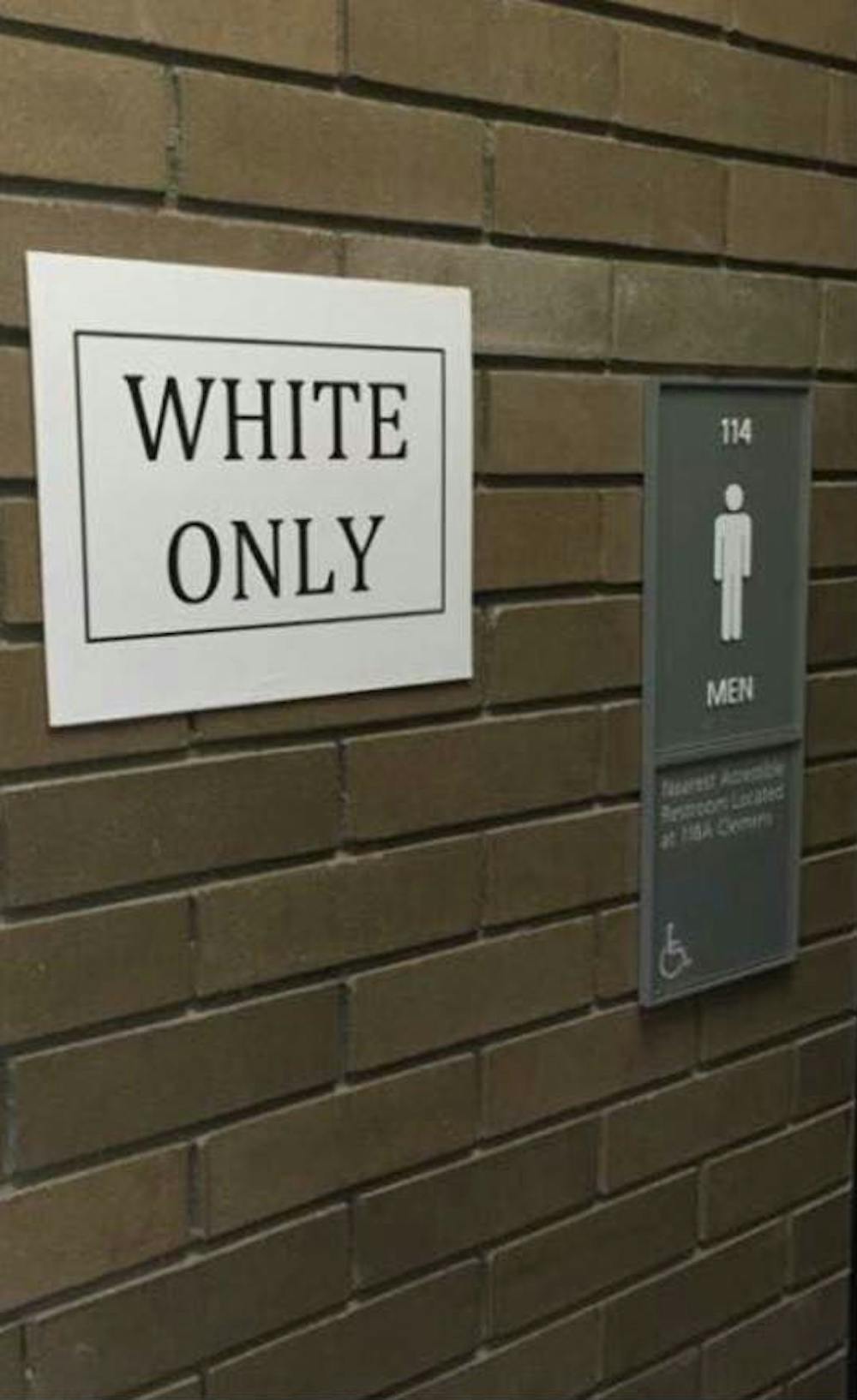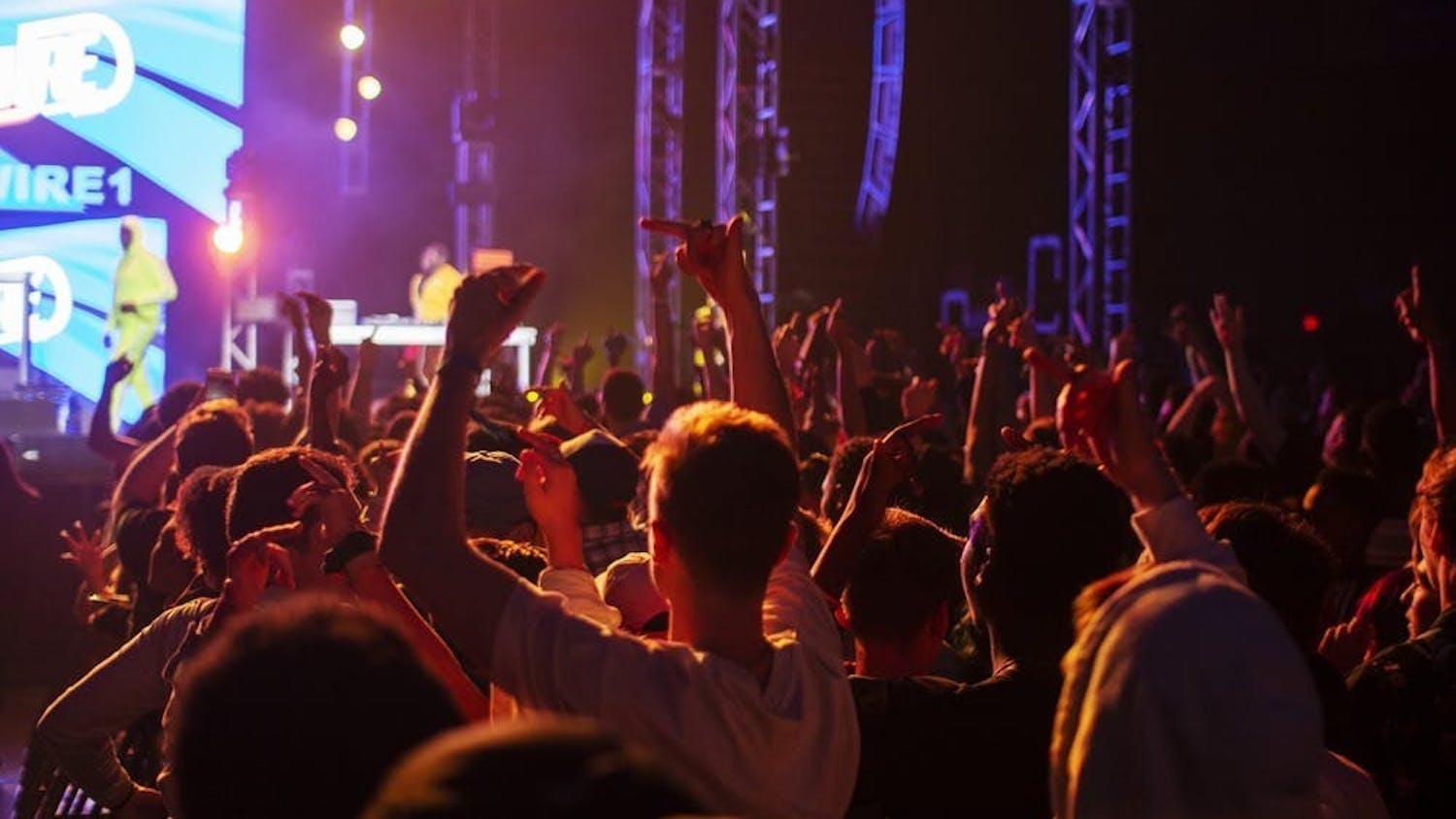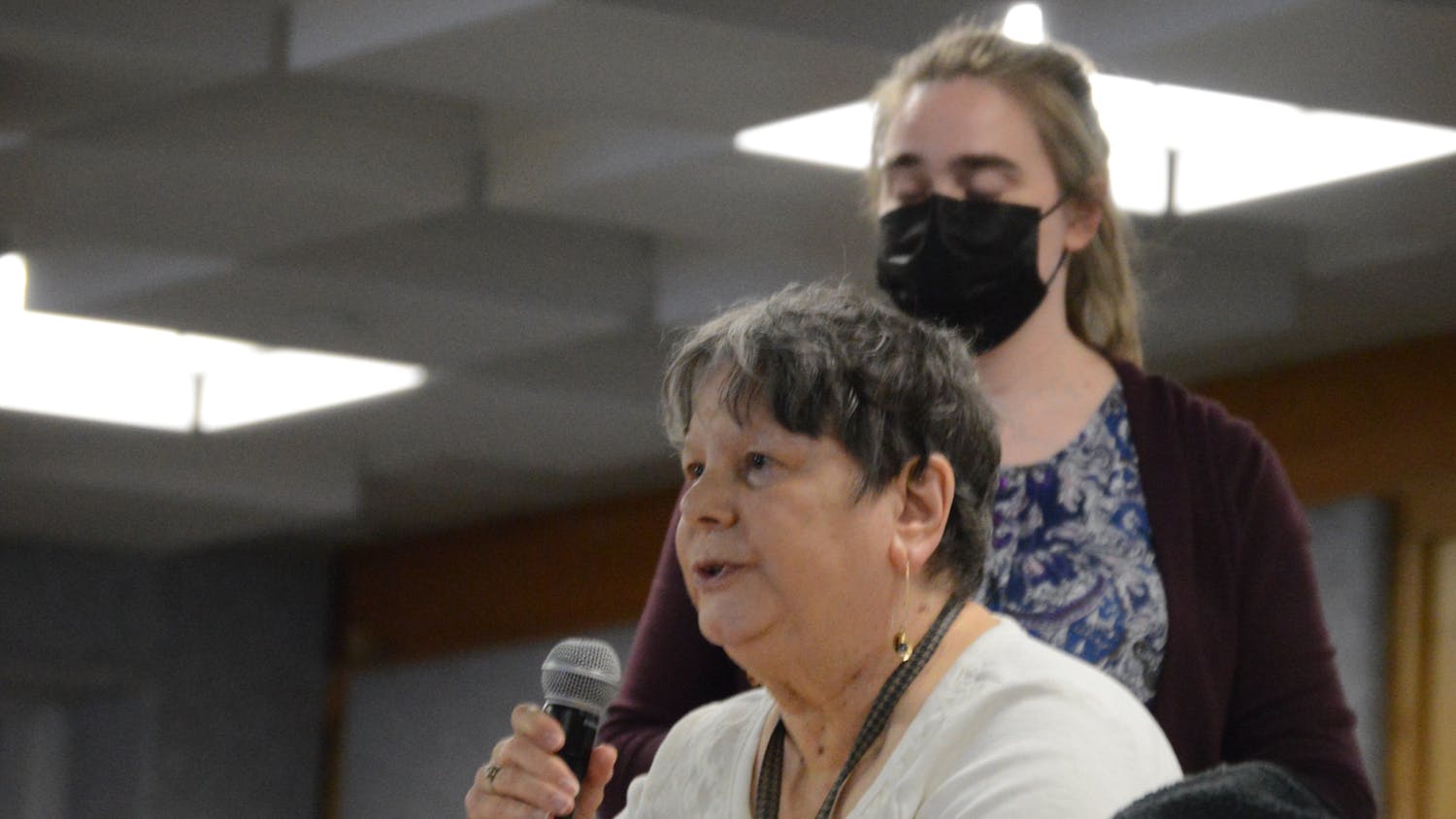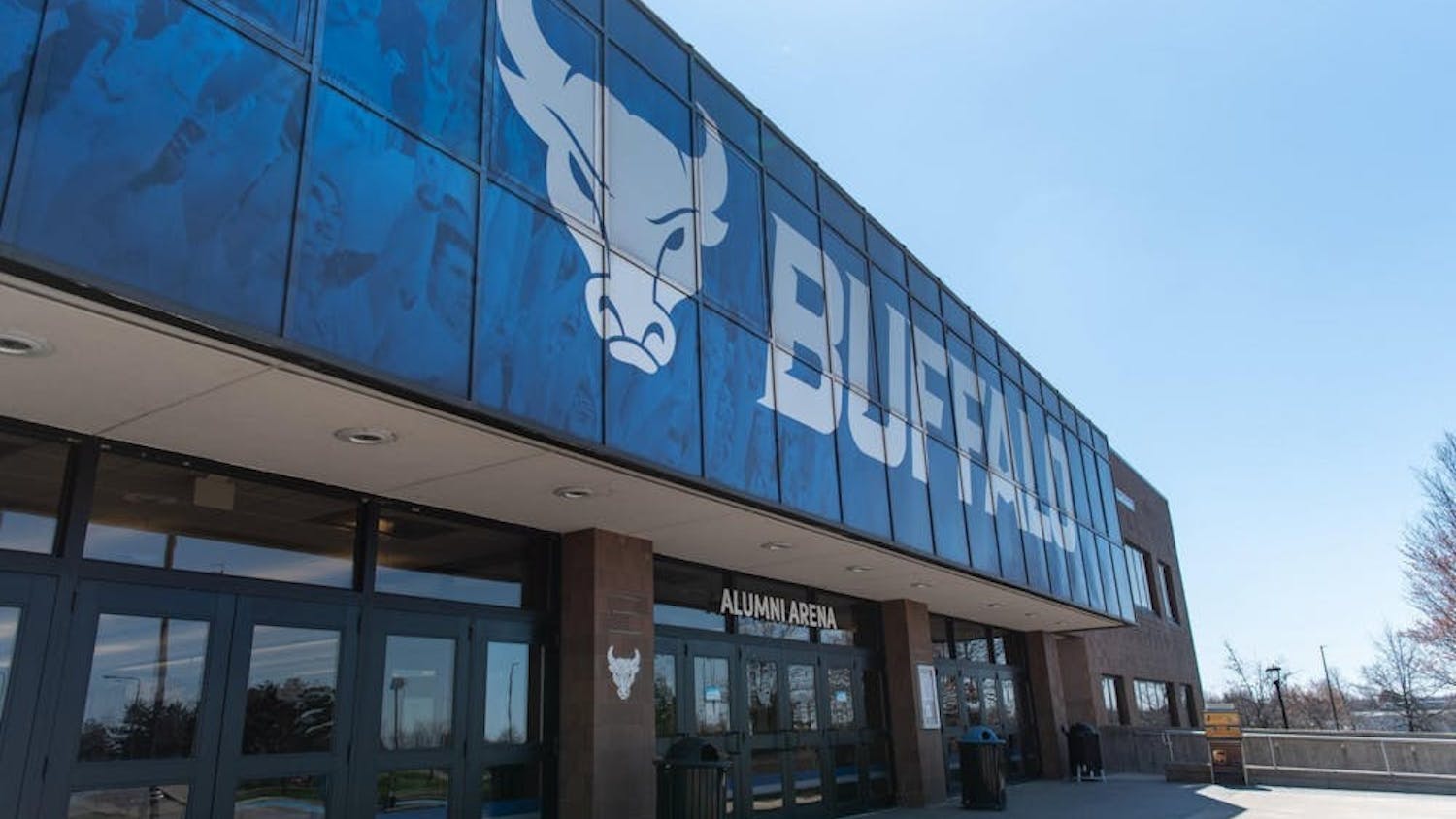This letter was submitted to The Spectrum from Ashley Powell, the graduate fine arts student who admitted to hanging 'White Only' and 'Black Only' signs on campus Wednesday. The only change was a decision by The Spectrum to censor a racial slur.
My name is Ashley Powell, and I am a graduate student here at UB in the Department of Art. In my class “Installation: Urban Space” we integrate our specific studio practices with theory, discuss them, and exchange ideas. We realize interdisciplinary and collaborative projects.
The prompt for this project was to create an installation within 5 minutes walking distance from the CFA, which addresses “time.” We were welcomed to address time in whichever way we interpret it and however we see fit. In this class, we are learning to finesse our articulation as artists, strengthen our voices, and unapologetically pursue our practice.
I am in pain. My art practice is a remnant of my suffering, but also an antidote that brings about healing. The afflictions I suffer from are self-hate, trauma, pain and an unbearable and deafening indignation. White privilege and compliance only exacerbate my symptoms. Non-white suffering is the greatest psychological detriment that I have ever faced, and one that many individuals undoubtedly face as well. It manifests as a blatant or furtive acknowledgement of inferiority to the dominant group. It results in a trauma that is perhaps more destructive and damaging than any physical, legislative, or societal oppression an individual may ever face.
I understand that the ambiguity of the “black only” and “white only” signs are problematic in light of recent events on other campuses where actual acts of hatred, misogyny, and racism occurred. However, my work is something else - an artistic intervention. This was not a social experiment. I do not need to experiment with non-white people’s trauma, nor pain, to know that is there. This was not a joke. I do not need to, and will never joke about my own reality, or anyone else’s, because our reality is grave, it is frightening, and it is one of constant endurance, resilience, and burden. This project, specifically, was a piece created to expose white privilege. Our society still actively maintains racist structures that benefit one group of people, and oppress another. Forty to fifty years ago, these structures were visibly apparent and physically graspable through the existence of signs that looked exactly like the signs I put up. Today these signs may no longer exist, but the system that they once reinforced still does. Any white person who would walk past these signs without ripping them down, shows a disturbing compliance with this system. These signs do not allow a white person to give the age old excuse of “I didn’t create this system” or “I never asked for this white privilege.” They attempt to give those people the individual agency to rebut the very system that puts them in a place of supremacy. These signs illustrate that white people do not have to be active aggressors, like the KKK, to be responsible for this system of racism and white privilege that threatens, traumatizes, brutalizes, stunts, and literally kills non-white people every day in the United States.
I recognize that this piece had extremely negative and traumatic effects on some of the non-white people in the student body. With the support of my professor and my colleagues from the class, I was able to confront many of those issues in person at a BSU meeting on Wednesday evening. The BSU attendees, the majority of whom were non-white people, spoke freely about the signs without knowing who created them, or why. Eventually I stood to take full responsibility and to clarify the nature and purpose of the project.
I will address here many of the criticisms I received for my actions, the implications of those criticisms, and the implications of this project as a whole. I will restate what I stated to the BSU that evening.
I apologize for the extreme trauma, fear, and actual hurt and pain these signs brought about. I apologize if you were hurt, but I do not apologize for what I did. Once again, this is my art practice. My work directly involves black trauma and non-white suffering. I do not believe that there can be social healing without first coming to terms with and expressing our own pain, rage, and trauma. For anyone who is questioning my actions on the basis of the pain they caused, I will say this is the nature of my art and this is the nature of social change. Perhaps, sharing some of my own experiences may elucidate the question of trauma and pain.
I attended Southeast Missouri State University in the course of my undergraduate career. I was called a “n*gger-monkey” on that campus, I was called a “n*gger-bitch.” I was born and raised on the southeast side of Chicago, where my siblings and friends and I have experienced police intimidation first-hand. My father is 75 years old, and he was born in 1940 in a slave home on a plantation in Greenwood, Mississippi. I have generational struggle and trauma in my family like many non-white people currently living in America. And for those who would reproach me for invoking our pain: it is my belief that silent acknowledgement and endurance of our shared trauma will in no way lessen its effects.
My art practice is not an act of self-policing meant to hide my rage. Instead, it uses pain, narrative, and trauma as a medium of expression and as grounds for arguing a need for change in the first place. I understand that I forced people to feel pain that they otherwise would not have had to deal with in this magnitude. But I ask, should non-white people not express or confront their trauma? Should we be content with not having to confront that pain? We know it exists, and it often causes many of us immediate discomfort. Should we not be in a state of crushing discomfort? Should we be content with being comfortable? Do we not have to come to terms with our trauma in order to articulate the necessity and urgency of social change? Many expressed to me that they left the “hood” to avoid dealing with things like this. Is that not problematic? Just because you are not there, are these issues irrelevant?
These signs made you feel discomfort. They are tangible objects that forced you to revisit your past, to confront your present, and to recognize here and now the underlying social structures that are directly responsible for your pain and suffering. This project makes forceful what has been easy for you to ignore.
People expressed to me that they feared for their lives on Wednesday. That the signs negatively affected the rest of their day, and will probably affect the rest of their semester, or even their entire life. The question that I pose is why did it take these paper on cardboard signs to elicit such strong reactions? Do non-white people not already fear for their lives every day? Along with and beyond the fact that they stirred racial trauma, if they aren’t already an underlying issue, why has there been such a strong a reaction? If they weren’t needed, and if they are irrelevant, then, why are so many people upset? As it has been firmly expressed, this is our lives. For that very reason, I ask do we not need to attack social structures responsible for the burdens on our lives, and expose what it means to be non-white in the US? Are we not complicit in our own oppression when we turn away from our shared pain? My art is not silent, it does not spare our feelings, and it does not spare the feelings of the privileged. These signs are the reality of our lives, and I need our lives to change.
I did not ask for permission. My practice does not need permission to speak honestly, because structural racism is in fact my life, your life, and it is our lives that are at stake. If I had asked for permission, and it had been denied, then I believe, people would have been outraged at the fact of not allowing me to speak about racism. This art is not made for the gallery. The art gallery is already ingrained in present and historical structures of institutional racism; otherwise it would have stunted, if not completely eliminated the productive conversations we should have at this moment. My art practice will never ask for, nor will it ever need institutional authority to regulate my voice. Should my art be censored? Should it be censored because it is too honest or too painful for some people? My practice does not need permission when our lives are at stake, and I will not ask for permission to help change your life.
My work gives agency to my trauma, and I ask that you do the same. I question, should you not take your rage, your pain, and your hurt and convert it into agency? For all the energy being used to eliminate me, can it be used instead to hold accountable the actual system of oppression?
Furthermore, are the white people who stayed unaffected by this art project responsible for complying with a system that causes injustice, pain, and anguish for non-white people? Are they not implicated when they allowed these signs to stay up, in the same manner that they continue to allow and comply with our racist system that benefits white skin. An individual does not have to be an active aggressor to be partially responsible for the system that unjustly empowers one and oppresses another - all they need to be is silent. These signs, which made plain and tangible the dynamics of our society, gave passive people in power the chance to individually take steps towards equality, and away from privilege.
In the history of art, there have been many art pieces and interventions that have addressed this pain. Francis Bacon famously stated, art for him meant “to remake the violence of reality itself.” This is what his art was, and this is what my art is. Kara Walker’s Subtlety hurt us, but that hurt was necessary to call us to action. Adrian Piper’s Calling Cards hurt us, but once again that hurt was necessary to generate more discussion. I will not allow our society to continue to beat us to death and claim that we condone it, due to our silence. I will be vocal, we will be vocal, and I will not allow the weight of our trauma to stunt our voices. We will use our trauma, we will remake our reality.
My practice wants to call you to action and force you to make a choice. I ask, why have these signs caused more outrage than the fact that over 800 people have been unjustly murdered by the police since the death of Michael Brown? Why does it take signs, and not the public and unlawful police gang rape of Charnesia Corley to cause one of, if not the biggest turn out of the BSU ever? Why does it take these signs for students of different non-white organizations to finally and passionately verbalize a need for non-white solidarity?
Art is not an object. It isn’t only a painting or sculpture, and it does not only belong in a gallery. Art finds a way to say what could not be said before. It has the agency to say what would not have been said before. I am an artist, this is my practice, and this is how I speak. This art project is what it took to force people to have a conversation that should have already taken place at this magnitude. Take for example the testimonies invoked and expressed in that BSU meeting alone. University at Buffalo is one of the most diverse schools in the country, ironically situated in one of its most segregated and racist cities. We are the intellectuals that can transform our frustrations into constructive social actions. We, university students, have always been the ones to confront social issues. I refuse to believe that the student body will rest on the fact that it was hurt, and end the discussion there. University at Buffalo has a rich history of critical social engagement. However, my art project in no way was meant to reflect the opinions of our university. Instead, it was meant to critique the issues that we as an intellectual community have fallen short of addressing.
I understand my art project has exhumed our shared pain. However, our society cannot heal or change until non-white people are able to confront and gain agency through our burdens, and white people are able to confront and become accountable for their privilege. It is a delusion to believe that we can change society without first changing ourselves. From the response to this art project, my practice and goals are affirmed, and I stand steadfast in knowing that the change direly needs to occur.





